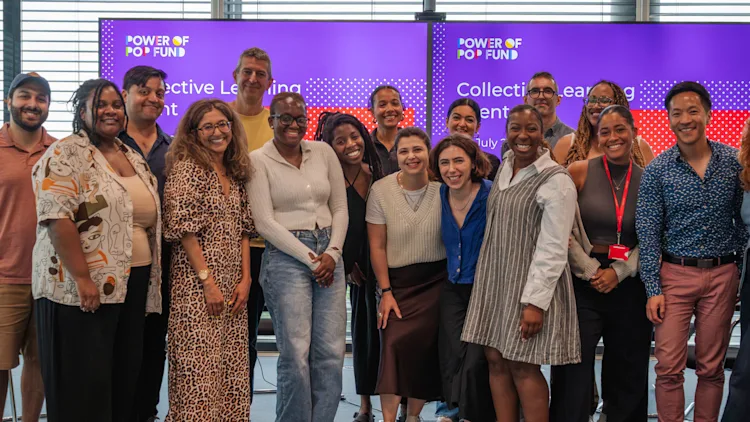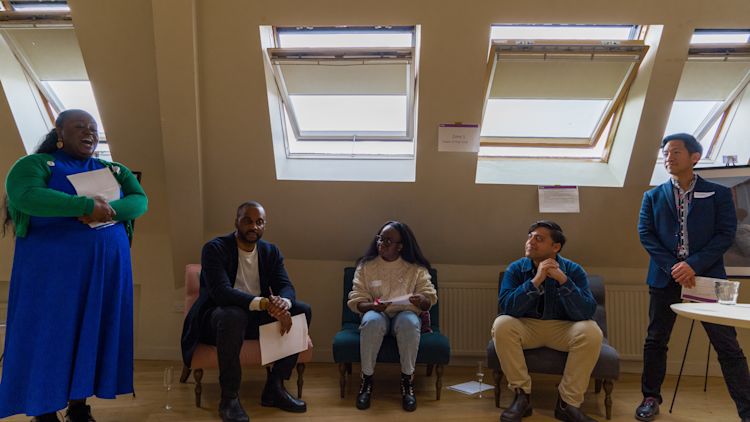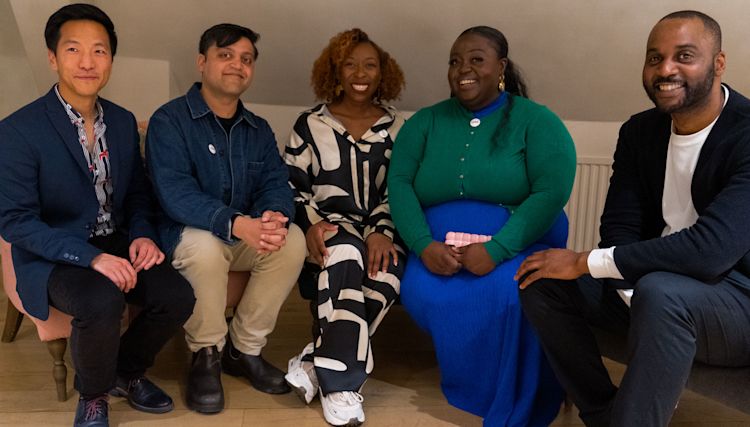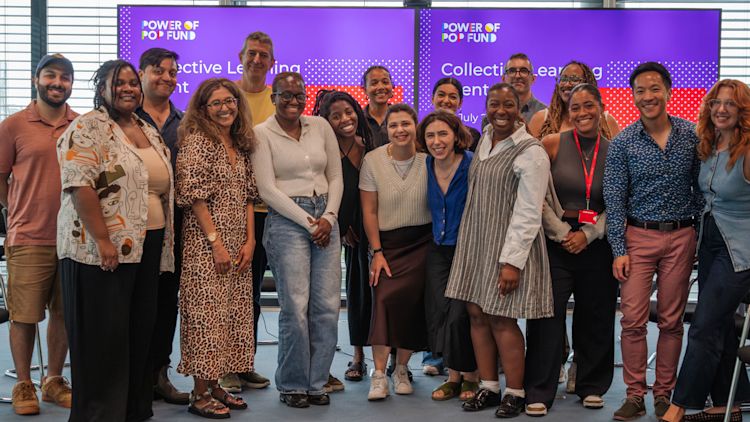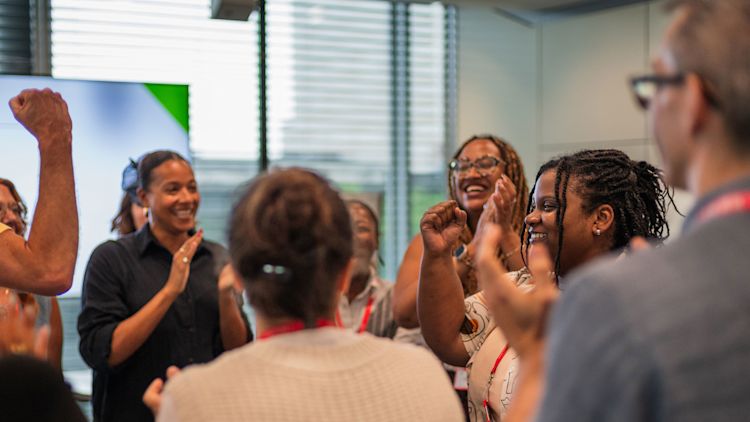
Words by Eva Didier
Photographs by Derick Armah
‘An Ecosystem Moving in Sync’
In Early July, the Power of POP fund met for its 5th collective learning event. On this ‘first Wednesday of the month’, a group of twenty-five – including POP funded partners, core team and Community Council members – gathered bright and early in the hustle and bustle of Euston at the Wellcome Trust building, generously hosted by OKRE(opens in new window), one of our partners.
The Collective Learning Events have been taking place since the inception of the POP Fund in 2022. More than a workshop day or a social mixer (although they are that too), these are an essential part of the POP Fund’s practice. The Collective Learning Events offer a space to be in community, to co-conspire and practice kinship and generosity together. They are also one way into building infrastructure (one of the three strategic pillars of the Fund(opens in new window)) by facilitating and encouraging connections across partners.
Our 5th collective learning event offered something different. as the POP Fund concluded its 3-year pilot in May 2025, we set an intention to use this event to move deeper into strategising and unlock the power of partners’ relationships initiated - for some – three years ago. To do this, we experimented with a new format – more peer-led, more participatory and more creative to showcase the work and skills of people in the room. We set out to broach some of the most urgent conversations happening across the POP culture for social justice ecosystem.
We first opened the circle, re-engaging with familiar faces and welcoming new ones, as we were lucky to be joined by some of our newest cohort 3 funded partners. This was followed by a series of ice breakers, notably including a ‘zombie apocalypse’ version of musical chairs. On top of the adrenaline rush, the zombies offered valuable reflections to start the day:
🧟 Strategising as a team gave humanity a fighting chance.
💡 Sharing tried and tested tactics and learnings made us better able to outsmart the challenge.
🪑 Resisting the urge of being the lone hero and occasionally sitting still was more effective in withstanding the onslaught.
This was followed by an ensemble session designed to get hands-on with deep narrative work. We gathered around a ‘difficult dinner’ table, where a rolling cast of four guests engaged through role-play in a conversation convincing a resistant audience to watch the movie ‘Sinners(opens in new window).’
The exercise offered a timely topic to tackle the deep narratives that underpin a range of key cause areas and identify a north star to harmonise our social movements, across racial justice, migration, climate justice, gender justice, and health.
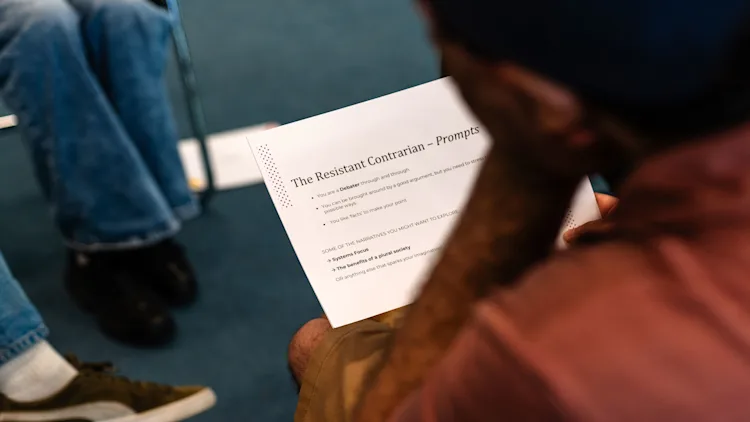
Key Takeaways
Here are five take-aways that came from the collective conversation:
🌉 Language can be a bridge. “We can speak the language we want but we need the people we are trying to persuade to be in the room with us, we need to learn their language to actually have impact” as one participant put it, to avoid audiences’ disengagement.
🔍 Translate for relevance. Messaging is more effective when it addresses people’s real-life concerns. Audiences need to see how some of the narratives pushed at them connect to their lives; and storytellers need to translate these narratives into stories that can bring people in.
☮️ There is power in peace-making. There is power in adopting a peacemaker role, particularly in polarised settings. Being in constant opposition can be draining on resources – creating shared purpose can be more energising.
👂🏾Disrupt jadedness. Some of our dinner guests longed for the comforts of ‘a simpler past’, a ‘jaded’ sentiment not determined by age or generational differences. One key stake here is to disrupt jadedness by practicing deep listening as people are more likely to change their mind when feeling heard, and to rally when met with genuine curiosity.
🫱🏽🫲🏿 Move from individualism to collectivism. Contemporary media is often consumed in isolation. This weakens the collective sense of action and solidarity. We don't need to have a lot in common with someone to connect meaningfully but we do need stories and spaces where people with different views can discover shared values and overlaps.
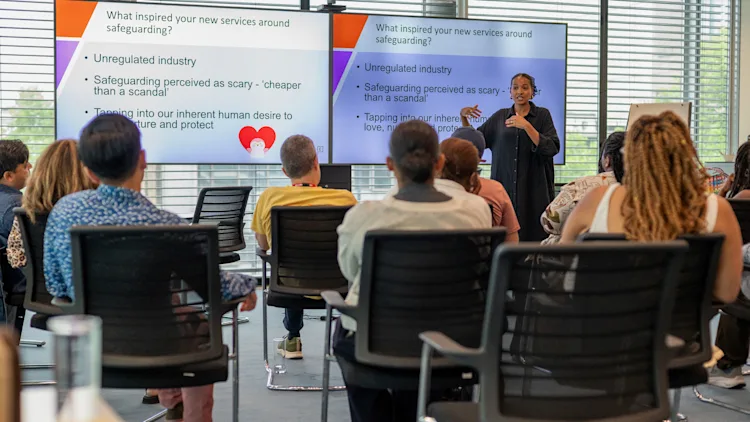
Partner’s Corner
We then heard two case studies from funded partners: developing safeguarding policy training(opens in new window) from We Are Bridge(opens in new window) ; and an internal impact and measurement review from Heard(opens in new window). Both cases highlighted and modelled culture shift: whether through building legacies for safer, more equitable and authentic representation in the creative industries; or via embedding co-creation within internal organisational processes. Our Partners Corner made room for learning from both what works and what doesn’t work.
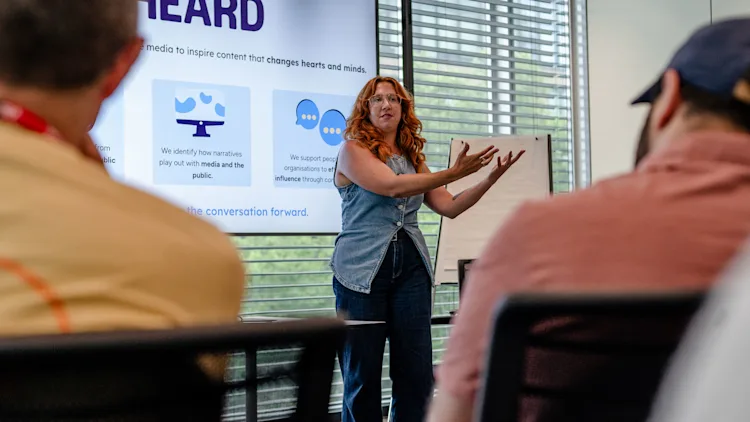
Most Significant Change Stories
After lunch, we hacked the Most Significant Change method - a participatory evaluation tool designed to collectively build and select stories of change – through creative writing, using basic story structure (exposition; inciting event; rising pressure; climax and resolution) supported by our screenwriters in the room. This exercise uncovered common threads:
🪡 Resolution does not mean closure. Resolutions often marked the beginning a new learning journey for organisations.
📌 Real change is ‘scrappy’. Underlying all stories of change in the room was the realisation that something new needed to be tried out, and matters had to be taken into our own hands – and that learning by trial and error was somewhat intrinsic to that process.
🪢 Centring power within the community. Putting community at the heart of this work is not only disruptive of existing power structures, but it also enables us to surprise and subvert audiences’ expectations when it comes to who tells what story and how.
Deep Listening
As the day drew to a close, guests echoed each other across the circle - skill sharing, reciprocity and interactivity... and we reflected on the role and importance of deep listening as a practice. This brought to mind the UN/Bound(opens in new window) installation from the Feel the Sound(opens in new window) exhibition at the Barbican: a holographic choir by TRANS VOICES, ILĀ & MONOM(opens in new window), the installation invites each visitor to add their voice via a mic. The system then auto-tunes it and integrates it into a collective choral experience, bringing the new voice into harmony with the choir and playing the new sound back into the room. The installation description reads ‘UN/Bound reveals the voice as a means of true expression, illuminating new spaces of belonging and collective resonance, where deep listening becomes a catalyst for change’.
Embracing collective resonance feels apt to describe the day we shared together in community in this most recent Collective Learning Event. As one participant captured it: “we are becoming an ecosystem which moves in sync”
